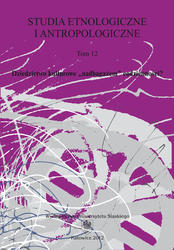

The subject-matter of considerations is a presentation based on memories reports of the cultural process of accustoming Lower-Silesia villages by the population from the Eastern borderlands of the Second Republic of Poland. The basis of this work constitutes empirical studies conducted between 1989 and 2009. The analyses cover the first period of Pole relocation, namely from 1945 to 1946. What has been assumed is a colloquial way the relocated understand their history, according to which the timeline is broadened and comprises the period from the World War II breakout and, subsequently, so called occupations (a Soviet, German and again Soviet one) to the moment of their arrival to the Western lands. In accordance with such an understanding of their own fate, cultural accustomation of new spaces is analysed through trauma and experiences of these people starting from a luminal period, it being a death of Poland in September 1939. This kind of a subjective perception of the history of one’s own group is extremely attractive for an anthropological analysis. It enables tracing not only subsequent political changes and prosecution of the Polish people connected with it, but also cultural changes, and new competence gain. It is them that, in consequence, determined a qualitatively different way of a dialogue with a changing reality and one’s won cultural heritage despite the permanence of many traditional cultural structures. It was a totally new phenomenon, and unknown to this population. Objectively speaking, it required the renouncement of many cultural canons biding so far and working out categorically new mediation structures under the circumstances of a dismantled borderline. It derived from particularly a political, but also cultural status of the Polish borderline people in this area. The experiences constituted the basis for the formation of a new social and cultural capital. As a result, it decided on particular ways of a cultural accustomation of the people in an extreme situation. The text paid attention to such issues as the first contact with a foreign land, new, multidimensional challenges, and, consequently, accustoming homestead, farmstead, fields, chapels and roadside crosses, and, finally, the whole village space.
Download files
Citation rules

Vol. 12 (2012)
Published:
 10.31261/SEIA
10.31261/SEIA